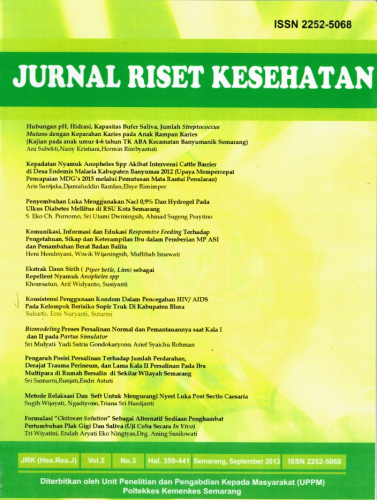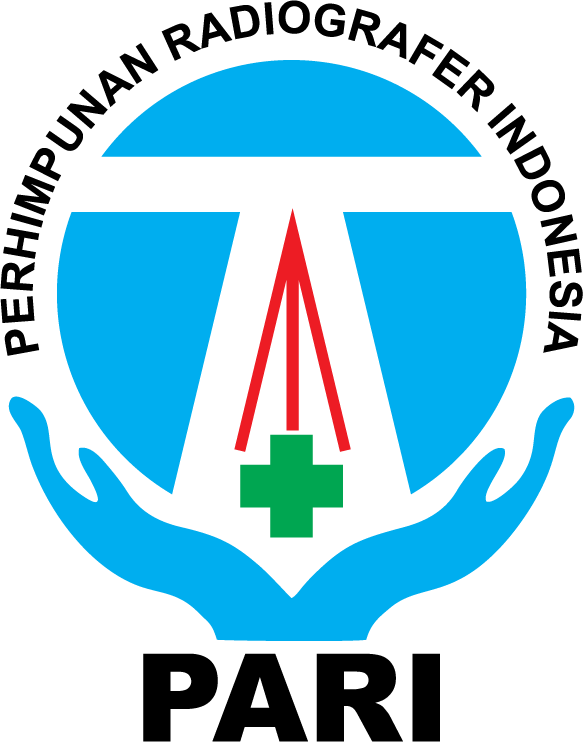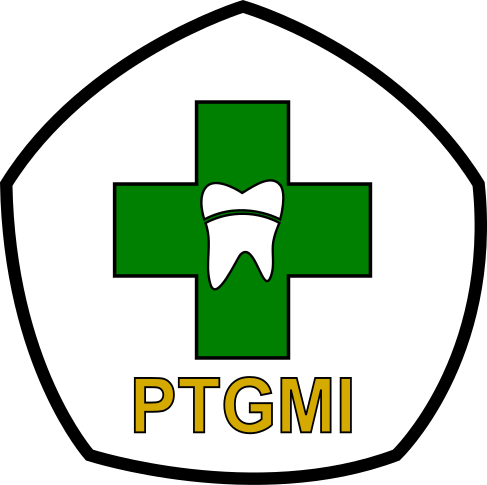ISOLATES OF POLYPROPYLENE-DEGRADING BACTERIA FROM A LANDFILL
Abstract
Polypropylene (PP) is a synthetic, heat-resistant, plastic. This quality has made it the second most commonly used in everyday life, including in disposable medical face masks. While the COVID-19 pandemic has led to an escalation of the face masks use in the last two years, their abundant waste, which is difficult to decompose naturally, can have a negative impact on the environment and human health. The purpose of this study was to obtain isolates of PP decomposing bacteria from the landfill in Ngipik, Gresik. The isolates were obtained from soil samples in the landfill. Bacterial isolates were tested for their ability to degrade PP during the 28 days of the liquid phase. The data obtained were bacterial growth data and PP degradation. There were three isolates that had the potential to decompose PP, namely NG 1, NG 2, and NG 3. It was concluded that the NG2 bacterial isolate is able to decompose PP by 0.47%. Based on the results of 16S sRNA, these three tended to be in the genus of Bacillus. The results of this study are expected to enrich the data of potential local bacteria to decompose PP obtained from Gresik landfill areas.
Keywords
Full Text:
PDFReferences
Aragaw, T. A. (2020). Surgical face masks as a potential source for microplastic pollution in the COVID-19 scenario. Marine Pollution Bulletin, 159(June), 111517. https://doi.org/10.1016/j.marpolbul.2020.111517
Auta, H. S., Emenike, C. U., Jayanthi, B., & Fauziah, S. H. (2018). Growth kinetics and biodeterioration of polypropylene microplastics by Bacillus sp. and Rhodococcus sp. isolated from mangrove sediment. Marine Pollution Bulletin, 127(April 2017), 15–21. https://doi.org/10.1016/j.marpolbul.2017.11.036
Ayuningtyas, W. C. (2019). Kelimpahan Mikroplastik Pada Perairan Di Banyuurip, Gresik, Jawa Timur. JFMR-Journal of Fisheries and Marine Research, 3(1), 41–45. https://doi.org/10.21776/ub.jfmr.2019.003.01.5
Geyer, R., Jambeck, J. R., & Law, K. L. (2017). Production, use, and fate of all plastics ever made. Science Advances, 3(7), 3–8. https://doi.org/10.1126/sciadv.1700782
Helen, A. S., Uche, E. C., & Hamid, F. S. (2017). Screening for Polypropylene Degradation Potential of Bacteria Isolated from Mangrove Ecosystems in Peninsular Malaysia. International Journal of Bioscience, Biochemistry and Bioinformatics, 7(4), 245–251. https://doi.org/10.17706/ijbbb.2017.7.4.245-251
Kavitha, R., & Bhuvaneswari, V. (2021). Assessment of polyethylene degradation by biosurfactant producing ligninolytic bacterium. Biodegradation, 32(5), 531–549. https://doi.org/10.1007/s10532-021-09949-8
Liang, H., Ji, Y., Ge, W., Wu, J., Song, N., Yin, Z., & Chai, C. (2022). Release kinetics of microplastics from disposable face masks into the aqueous environment. Science of the Total Environment, 816(xxxx). https://doi.org/10.1016/j.scitotenv.2021.151650
Maity, S., Banerjee, S., Biswas, C., Guchhait, R., Chatterjee, A., & Pramanick, K. (2021). Functional interplay between plastic polymers and microbes: a comprehensive review. Biodegradation, 32(5), 487–510. https://doi.org/10.1007/s10532-021-09954-x
Ni’Matuzahroh, Trikurniadewi, N., Pramadita, A. R. A., Pratiwi, I. A., Salamun, Fatimah, & Sumarsih, S. (2017). Biodegradation of naphthalene and phenanthren by Bacillus subtilis 3KP. AIP Conference Proceedings, 1854. https://doi.org/10.1063/1.4985417
Peng, Y., Wu, P., Schartup, A. T., & Zhang, Y. (2021). Plastic waste release caused by COVID-19 and its fate in the global ocean. Proceedings of the National Academy of Sciences of the United States of America, 118(47). https://doi.org/10.1073/pnas.2111530118
Potrykus, M., Redko, V., Głowacka, K., Piotrowicz-Cieślak, A., Szarlej, P., Janik, H., & Wolska, L. (2021). Polypropylene structure alterations after 5 years of natural degradation in a waste landfill. Science of the Total Environment, 758(xxxx). https://doi.org/10.1016/j.scitotenv.2020.143649
Rahman, A., Sarkar, A., Yadav, O. P., Achari, G., & Slobodnik, J. (2021). Potential human health risks due to environmental exposure to nano- and microplastics and knowledge gaps: A scoping review. Science of the Total Environment, 757, 143872. https://doi.org/10.1016/j.scitotenv.2020.143872
Shams, M., Alam, I., & Mahbub, M. S. (2021). Plastic Pollution During COVID-19: Plastic Waste Directives and Its Long-term Impact on The Environment. Environmental Advances, 5, 100119. https://doi.org/10.1016/j.envadv.2021.100119
Skariyachan, S., Patil, A. A., Shankar, A., Manjunath, M., Bachappanavar, N., & Kiran, S. (2018). Enhanced polymer degradation of polyethylene and polypropylene by novel thermophilic consortia of Brevibacillus sps. and Aneurinibacillus sp. screened from waste management landfills and sewage treatment plants. Polymer Degradation and Stability, 149, 52–68. https://doi.org/10.1016/j.polymdegradstab.2018.01.018
Spennemann D. H. R. (2021). COVID-19 Face Masks as a Long-Term Source of Microplastics in Recycled Urban Green Waste. Sustainability, 14, 207.Vimala, P. P., & Mathew, L. (2016). Biodegradation of Polyethylene Using Bacillus Subtilis. Procedia Technology, 24, 232–239. https://doi.org/10.1016/j.protcy.2016.05.031
Wang P., Zhao J., Ruan Y., Cai X., Li J., Zhang L., Huang H. (2022). Degradation of Polypropylene by the Pseudomonas aeruginosa Strains LICME WZH-4 and WGH-6, Journal of Polymers and the Environment
DOI: https://doi.org/10.31983/jrk.v11i2.8815
Article Metrics
Refbacks
- There are currently no refbacks.
Copyright (c) 2022 Jurnal Riset Kesehatan














































